Satoshi Yoshioka’s art from Sdatcher
Snatcher is a cult classic that should be experienced by both science fiction and Metal Gear fans. Even though it appears to “snatch” many of its influences and throw them together into a science fiction cornucopia, it actually explores the issues of humanity and existence in its own distinctive style.
The Artistic Pleasure of Tension
Snatcher was the brainchild of Hideo Kojima and originally came out in 1988 for the MSX console, a computer format that was popular in Japan and Europe in the 80s. It was ported for the PC Engine (known as the TurboGrafx-16 in America) before reaching American audiences on the Sega CD in 1994, with upgraded graphics and an additional third act. Set in 2047, you play as Gillian Seed, an amnesiac Junker (Japanese Undercover Neuro Kinetic Elimination Ranger) who hunts down Snatchers in the hopes that it will help him to remember his past. The eponymous Snatchers are artificial life forms, or bioroids, designed to blend in with humans. The game takes place in the metropolis of Neo-Kobe, a vibrant melting pot with a whole lot of history and lore. Snatcher uses a text interface similar to the old PC point-and-click adventure games, but it streamlines controls to the point where it’s considered one of the earliest precursors of the visual novel.
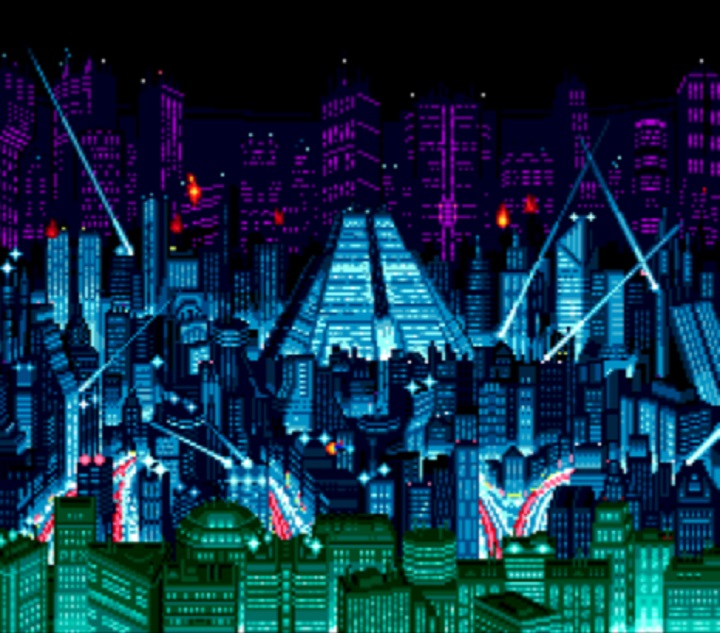
Former Konami artist Satoshi Yoshioka, who designed many of Snatcher‘s characters and worked at Konami for nine years on titles like Batman and Robin and Policenauts, told me in an email: “I got a lot of inspiration from classic movies like Blade Runner, The Terminator, and Alien. I made the graphics used in the game with a great deal of respect to [these films]. I was especially interested in the Hollywood SFX [special effects] at that time, and I tried to honour their spirit.”
This spirit is felt in many of Snatcher‘s designs, though their combination creates an atmosphere that has its own unique charm. Players get to know Snatcher‘s characters through complex dialogue branches with a surprising variety of options. Small comic book panels appear below the main visual window and give personality to each of the characters. The characters also react with appropriate facial expressions that help convey the game’s somber themes. Unlike the protagonists in many noirish cyberpunk books and films, Gillian Seed is expressive rather than following the trope of being stoic and subdued. His strong personality goes from melancholy amnesiac to driven investigator and even womanizer (though he gets almost universally rejected). He’s a likable character, even with his flaws. He’s visually inspired in part by Rick Deckard from Blade Runner, but also the more humorous Lupin the Third from the eponymous animated series.
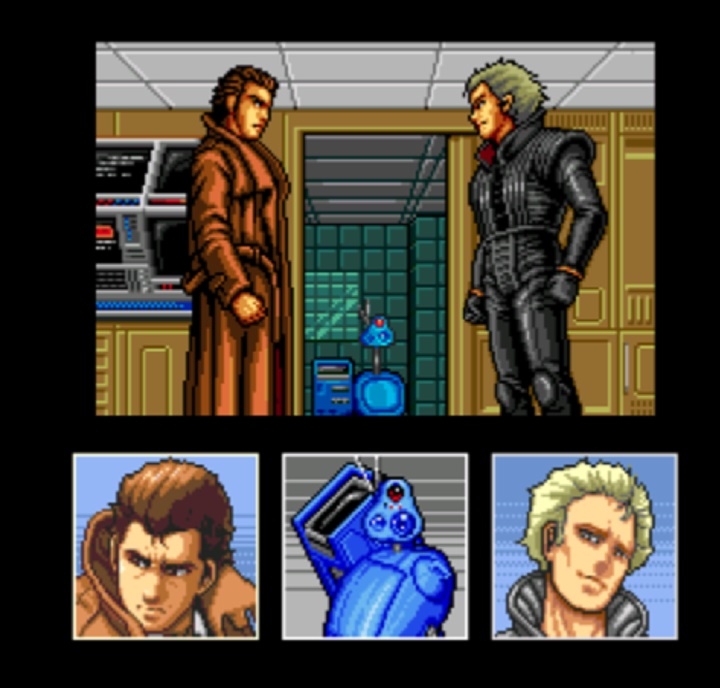
Yoshioka, who “created all the face graphics for the conversation parts,” said that drawing “the expressions of Gillian — surprise, delight, and so on — were the most challenging to me because of the complexity of the character. Gillian had an interesting mix of humour and seriousness. Kojima wanted to convey Gillian’s witty and charming nature, even in some of the more intense moments, so that it would make him seem more ‘human’ in contrast to the robotic Snatchers.” Designing the characters using Konami’s custom drawing application, Yoshioka says he was always guided by “Kojima and was mindful of making the graphics as ‘cinematic’ as possible.”
The high quality of the visuals emphasise the cinematic aspect by showcasing graphics that were closer to films than most gamers had seen before on a console. In the combat sequences against the Snatchers, especially one where a fellow Junker named Mika gets captured, the whole battle is framed as an interactive cutscene where you have to kill a villain who uses Mika as a human shield. In another sequence, Gillian’s Turbocycle gets sabotaged and spins out of control. The film cuts play out like an action movie, with tense music pounding in the background.
Developing In Creeping Silence
Snatcher‘s themes of changing technology were present in the development of the game itself. While it’d be easy to say the advanced graphics were due to the increased power of the Sega CD, Yoshioka pointed out that part of what made the development of Snatcher and all its various ports so cohesive is that “Snatcher was developed by a small number of people. In comparison, it might be about half of the average number for a NES game development team at that time. So the developers in different roles could work in close proximity to each other. It enabled us to respond directly and quickly to any developing tasks.”
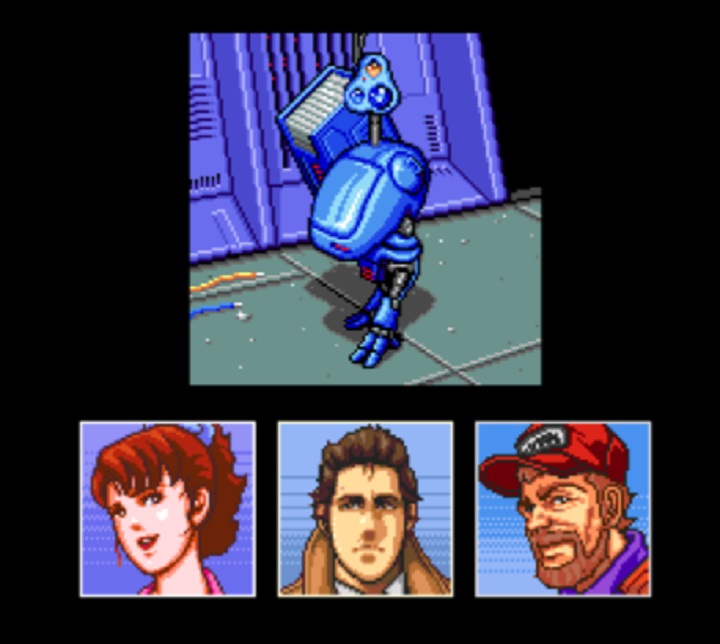
He explained, “Kinoshita (Tomiharu Kinoshita, the original MSX designer) created the original character design. I took part in drawing the characters as a team member of the port for PC Engine CD-ROM (which in turn would be ported with only minor changes to the Sega CD). I could redesign the supporting roles like Chin Shu Oh relatively freely. So I designed them to suit my preference. I heard that in the earlier stage of the development, Kojima had directed the designer to make the game character a bit like Katsuhiro Otomo (the director of Akira).”
This small team had flexibility, but it also meant this small group at Konami had to figure out how development worked when it came to simple things like burning CDs. “When we wrote the data [for Snatcher], we used CD-R writers. It was the first time for us to use the devices. We couldn’t inhibit some of the unidentified noises showing up in the game itself. The accident disturbed not only Kojima, but all the other members of the developer team. I was not well acquainted with the CD-R writers. I puzzled over the problem, and suggested not to shake it or to make noises when we used it, hahaha. We finally found that the disturbing noises were due to faulty wiring. Of course, we had amused smiles after we discovered the error was our own fault.”
This also brought the team together, a spirit that infuses the game. There’s one story Yoshioka shared that perfectly symbolized the unusual development of Snatcher: “I cannot forget that Kojima made strange lyrics for the song in the game, ‘Creeping Silence.’” It’s a track that effectively creates a creepy atmosphere, but the lyrics don’t appear in the game. “He [Kojima] sang it quite often, so the other members remembered the lyrics. ‘Spinner, spinner heeey,’ and we’d iterate on that. We often sang it all together.”
Replicant Snatchers
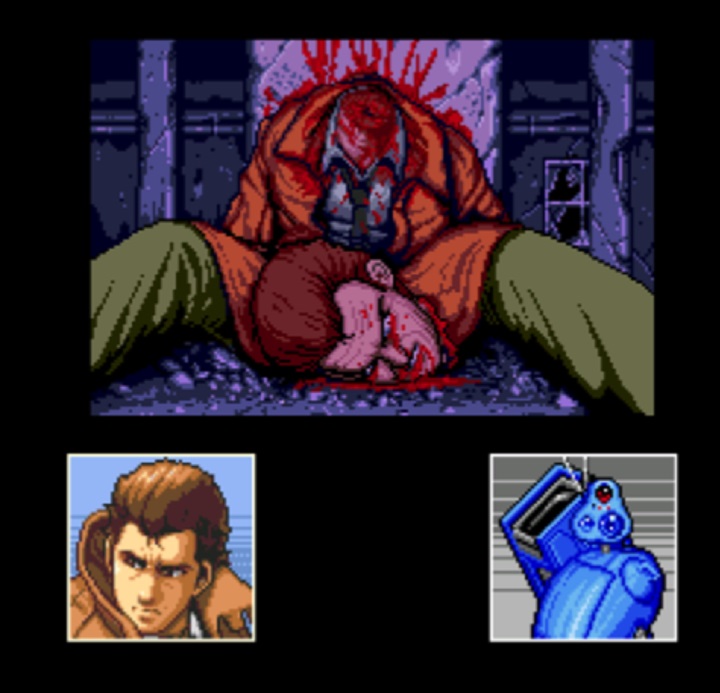
Ouch…
Technology can lead to moments of human bonding, but it’s a double-edged sword that can also wreak destruction. The real life Terminator Conundrum — a genuine issue debated by the Pentagon about how much autonomy AIs should be granted to kill — seems straight out of Snatcher. One of the more shocking moments early in the game is when Gillian comes across the body of Junker Jean-Jack Gibson, whose head has been viciously cut off and lies between his legs. The violence punctuates the threat of the Snatchers and, as Yoshioka points out, “is the first murdered corpse that the players face. So the staff working on the scenes wanted to evoke a dramatic impact and decided to use the most brutal image.” Snatcher doesn’t shy away from its robotic violence, including a maggot-infested corpse and an animal whose entrails have been ripped out.
The game doesn’t delve into Blade Runner’s ethical ambivalence when it comes to the existence of Snatchers. They’re a threat to be eliminated, not beings on the verge of self-awareness. The terror of that moment highlights the theme of humanity’s fear of being replaced by technology as represented by the Snatchers themselves. The irony is that humanity’s own self-destructive behaviour created a vacuum for the Snatchers to supplant them in the first place; the game’s villain is motivated by his disgust with human behaviour. When I asked Yoshioka about the relationship between technology, art, and humanity, he stated: “In order to know the things of the present, I believe it’s essential to know the things of the past. This is also true of arts…. We tend to take for granted present technology and the arts. But all of these forms are based on past inventions, innovations, and discoveries.”
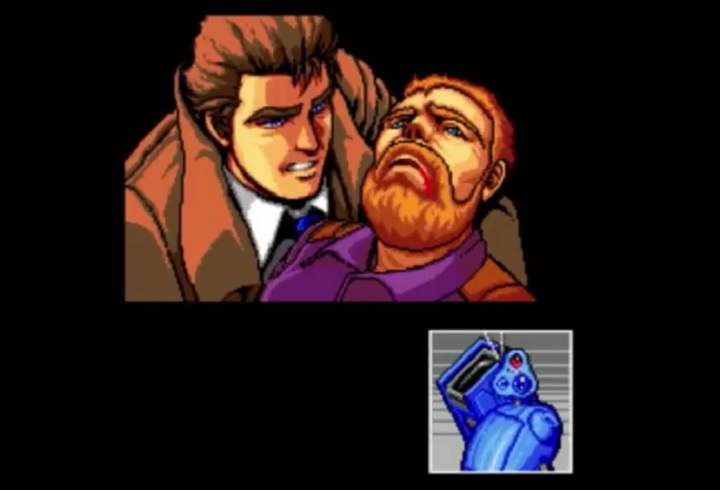
This theme is also explored more humanely. Metal Gear Mk. II, based on the mechanical nemesis of the original Metal Gear, is Gillian’s robot companion. It’s been imprinted with a personality programmed by Harry, the engineer for the Junkers. In the game’s big twist, you learn that Harry is actually Gillian’s son. The reason Gillian and his wife suffered amnesia is that they were part of a secret effort fifty years ago to develop the Snatcher program and replace all the world’s leaders. They were put into artificial sleep after the Lucifer-Alpha biological weapon went off. Harry lived on, oblivious to his parents’ fate. So the whole game, you’re interacting with him, asking about your equipment, and you don’t even know who he really is until he dies. That makes your relationship to Metal Gear Mk. II all the more poignant, since he is in essence Harry’s creation, your son by mechanical proxy. Metal Gear Mk. II is willing to sacrifice its life to save Gillian, and the implication is that there may come a day when humanity destroys itself and our legacy will only carry on through the technology we birth.
Yoshioka has considered the implications of Snatcher and the movies that inspired it: “There have been many SF movies and comics filled with fearful feelings about the progress of AI. I’ve got lots of inspirations from these kind of works. Of course, I fear watching and reading about them. But I’ve also loved AI robots since I was a child. In 1970, when I was just three years old, I saw several robots playing instruments in the Japan World Exposition at Osaka. I still clearly remember that scene and my feeling of wonder which still resonates. So I’m on the side of Metal Gear Mk. II-like robots being able to reach out and communicate with us. I’d prefer to believe in the dream of the emergence of robots that will be partners with humanity, instead of the kind of stories that portend destruction in the wake of AI progression.”
Will the advancement of AI and biotechnology reach a point in 2047 where humanity can be replaced by something akin to a Snatcher? Or will the progress made possible by new tech save people from themselves in the face of a catastrophic disease or environmental disaster? It’s the fact that there are no easy answers that makes Snatcher so compelling, reminding us that the investigation into human nature never ends. Yoshioka told me, “Though I regard myself to be a has-been, I’m trying to create some brand new impressions by remixing my works, which is my past. I hope the younger generation today realise they need to be aware of the classic and premier works and arts if they want to create something new.”
Satoshi Yoshioka’s interview was translated by Yoshihiro Tanigawa.
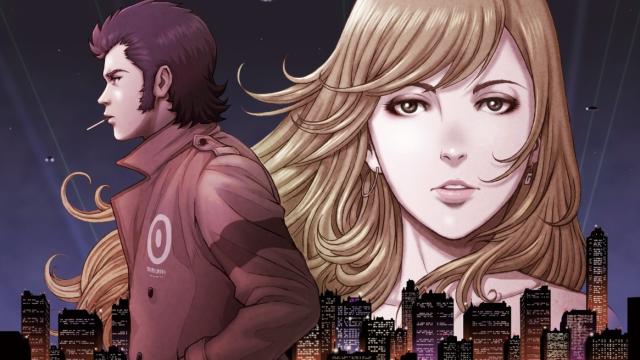
Comments
3 responses to “Snatcher Is Cyberpunk Noir At Its Best”
Great article, but I clicked on this link hoping they were announcing a re-release or remaster. I’ve only ever played a little of this game and that was through emulators.
This is a game that needs to go on console eShops or Steam/GOG. Either as is or with a sprucing up of graphics & engine.
but Konami are fairly useless these days, so will probably never happen unfortunately.